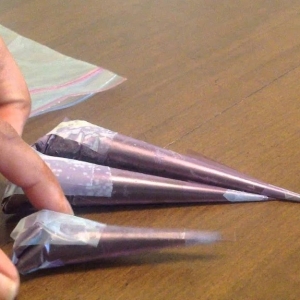When working with electrical circuits, ensuring that electricity can flow freely through a wire, connection, or component is essential. Whether you’re diagnosing a faulty wire, checking a switch, or repairing household electronics, continuity testing on a multimeter is one of the simplest yet most powerful tools in your arsenal.
This article will walk you through everything you need to know — from what continuity testing means to how to perform it correctly — so you can handle electrical troubleshooting with confidence.
Understanding Continuity Testing
What Is Continuity?
In electrical terms, continuity refers to the complete and unbroken path that allows electric current to flow. A circuit has continuity when current can travel from one end to another without interruption. If the path is broken — due to a damaged wire, loose connection, or blown fuse — the circuit has no continuity.
A continuity test simply checks whether this path exists. It tells you if electricity can travel freely through a component or if there’s a break somewhere along the line.
Why Continuity Testing Matters
Continuity testing plays a crucial role in troubleshooting electrical problems. It helps you quickly identify open circuits, damaged wires, and faulty switches — saving both time and money.
Here are a few common applications:
- Checking fuses: A blown fuse will have no continuity.
- Testing switches: Ensures a switch opens and closes the circuit properly.
- Diagnosing wires and connections: Finds broken or corroded connections in electrical systems.
- Inspecting printed circuit boards (PCBs): Detects broken traces or soldering issues.
Whether you’re an electrician, technician, or DIY enthusiast, knowing how to perform continuity testing on a multimeter is a must-have skill.
How Continuity Testing Works
Most modern digital multimeters (DMMs) come with a built-in continuity test mode, represented by a diode symbol or a soundwave icon. When this mode is selected, the multimeter sends a small current through the circuit and measures its resistance.
- If the path is continuous (low resistance), the meter beeps or shows “0” or near-zero ohms.
- If the path is broken (infinite resistance), the meter displays “OL” (Open Loop) or doesn’t beep at all.
That simple beep can save hours of guesswork when troubleshooting electrical issues.
Step-by-Step Guide to Continuity Testing on a Multimeter
Let’s go through how to perform a continuity test safely and accurately.
1. Power Off the Circuit
Always turn off power before testing continuity. Testing a live circuit can damage your multimeter and pose a shock hazard. Unplug the device or switch off the power supply to ensure safety.
2. Set the Multimeter to Continuity Mode
Turn the dial on your multimeter to the continuity test symbol (a soundwave or diode icon). Some meters automatically switch to resistance mode if continuity mode isn’t available.
3. Check the Multimeter
Before testing your component, make sure your multimeter is working correctly. Touch the two probes together — you should hear a steady beep or see a reading close to zero. This confirms your multimeter and leads are functioning properly.
4. Connect the Test Leads
Place the black probe into the COM (common) port and the red probe into the Ω or continuity port.
5. Test the Component
Touch the probes to both ends of the component or wire you want to test:
- Beep sound or “0 Ω” reading: The path is continuous — the component is good.
- No beep or “OL” reading: The path is broken — there’s an open circuit.
6. Interpret the Results
- Good continuity: The current can pass freely through the component.
- No continuity: There’s a break, damage, or bad connection somewhere.
Examples of Continuity Testing
Testing a Wire
Connect one probe to each end of the wire. If the meter beeps, the wire is intact. If it doesn’t, the wire is broken inside or the connection is faulty.
Testing a Switch
When the switch is in the ON position, the meter should beep, indicating continuity. In the OFF position, there should be no beep — confirming that the switch breaks the circuit as intended.
Testing a Fuse
Remove the fuse and test it separately. A good fuse will have continuity (beep sound), while a blown fuse will not.
Tips for Accurate Continuity Testing
- Ensure a good connection: Dirty, oxidized, or coated surfaces can prevent accurate readings. Clean contact points before testing.
- Avoid testing in live circuits: Always disconnect power to avoid damaging your multimeter.
- Use quality probes: Damaged or frayed probes can give false readings.
- Understand what the beep means: A continuous beep doesn’t always mean the component is perfect—it simply means there’s a path for current to flow.
- Combine tests: For more detailed analysis, follow continuity testing with a resistance or voltage test.
Common Mistakes to Avoid
- Testing with power ON: This can lead to inaccurate readings or permanent meter damage.
- Not isolating the component: Testing in-circuit components may lead to misleading results due to parallel paths.
- Assuming continuity means functionality: Some components, like semiconductors, may show continuity but still fail under load conditions.
By keeping these in mind, you’ll ensure your readings are accurate and your troubleshooting effective.
Advantages of Using Continuity Mode
Continuity testing on a multimeter offers several benefits:
- Instant feedback: The beep lets you test without constantly watching the display.
- Saves time: Quickly identifies breaks in circuits or bad connections.
- Safe and non-destructive: Uses a very small current, safe for most components.
- Versatile: Useful in electronics, home wiring, automotive systems, and appliance repair.
This simple test often serves as the first step in diagnosing any electrical problem.
When to Use Other Multimeter Functions
While continuity testing is perfect for checking open or closed circuits, it doesn’t measure the exact resistance or voltage. When precision matters — for example, measuring resistor values or voltage drops — you should switch your multimeter to the appropriate mode.
Think of continuity testing as your first quick diagnostic, while resistance, current, and voltage measurements help you go deeper.
The Role of Continuity Testing in Modern Electronics
With the growing complexity of modern electronic systems, continuity testing remains one of the most reliable and universal troubleshooting techniques. From automotive diagnostics to home appliance repair, it’s an indispensable step in ensuring electrical integrity.
Technicians often start with a continuity test before diving into more complex diagnostics because it instantly reveals whether a physical connection exists — a fundamental but crucial insight.
Conclusion: A Beep That Saves Time and Troubles
At first glance, continuity testing on a multimeter may seem like a basic function, but its simplicity hides its importance. That reassuring “beep” isn’t just a sound — it’s confirmation that your circuit is complete, your component is functional, and your electrical system is one step closer to perfection.
In a world increasingly dependent on electronics, mastering such foundational skills gives you a significant advantage. So, the next time your device stops working or your circuit fails, grab your multimeter, switch to continuity mode, and let the beep guide your way toward a solution.







